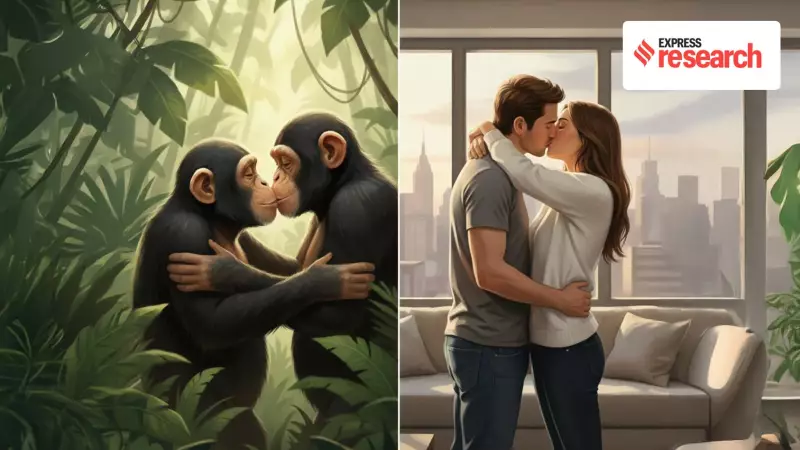
In a revelation that challenges our understanding of human intimacy, a groundbreaking international study has uncovered that the act of kissing dates back millions of years before modern humans walked the Earth. The research, conducted by a collaborative team from Oxford University, University College London, and the Florida Institute of Technology, suggests that romantic kissing is far from a human invention.
The Ancient Origins of Intimacy
Using sophisticated statistical analysis across 10,000 possible primate family trees, researchers have determined that mouth-to-mouth kissing likely first emerged between 16 and 21 million years ago. This stunning finding pushes back the origins of kissing by millions of years, suggesting our earliest primate ancestors may have engaged in similar intimate behaviors.
The study employed Bayesian phylogenetic modeling, a powerful statistical method that uses probability and genetic data to reconstruct evolutionary timelines. By analyzing behavioral patterns across different primate species, the team could trace when kissing first appeared in our evolutionary history.
Defining the Universal Kiss
To conduct their research, scientists first had to establish a biological definition of kissing that transcended human cultural concepts of romance. They defined it as "non-agonistic interaction involving directed, intra-specific, oral-oral contact with some movement of the lips/mouthparts and no food transfer."
This careful definition helped researchers distinguish true kissing from similar behaviors like aggressive mouth fighting or parental feeding. While kissing-like behaviors occur in various species including ants, birds, and polar bears, the study focused specifically on Afro-Eurasian monkeys and apes where sufficient observational data existed.
The research team gathered information from multiple sources including scientific papers, wildlife descriptions, and even online video archives to create the most comprehensive dataset on primate kissing behavior assembled to date.
Kissing Across Species and Time
The findings reveal that kissing is widespread among great apes, observed in chimpanzees, orangutans, and humans, as well as several species of Afro-Eurasian monkeys. Different species use kissing for various purposes - some in sexual contexts to enhance reproduction chances, others during courtship rituals, and some to strengthen emotional bonds in non-platonic relationships.
Perhaps most remarkably, the research indicates that kissing behavior has persisted across almost all primate lineages for millions of years, with the possible exception of Eastern gorillas where the behavior hasn't been documented.
Even more fascinating is the evidence that Neanderthals also engaged in kissing. Ancient DNA analysis shows that Neanderthals and humans shared oral microbes long after their evolutionary paths diverged, strongly suggesting that the two species kissed when they interacted.
While researchers caution that their conclusions are preliminary due to limited datasets, they emphasize that this study provides a crucial foundation for future comparative research on the evolution of intimate behaviors. The humble kiss, it seems, has been sealing social and emotional bonds long before humans composed poetry or love songs to express affection.





